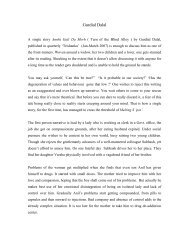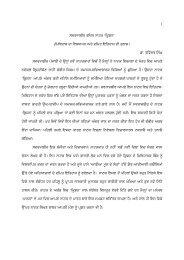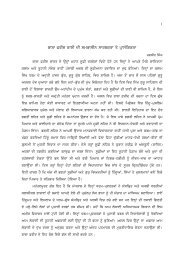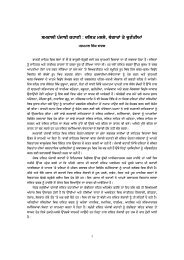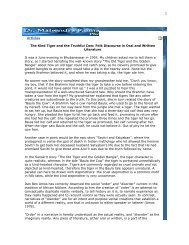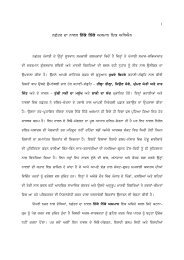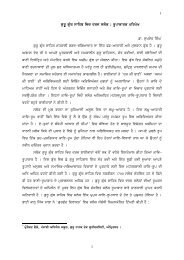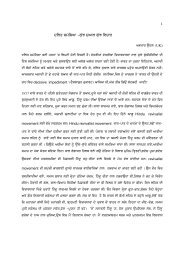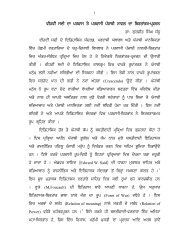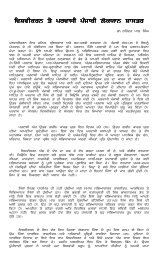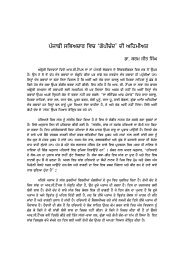Dialogue Among Civilizations-Kapil Kapoor-23 ... - Panjabi Alochana
Dialogue Among Civilizations-Kapil Kapoor-23 ... - Panjabi Alochana
Dialogue Among Civilizations-Kapil Kapoor-23 ... - Panjabi Alochana
You also want an ePaper? Increase the reach of your titles
YUMPU automatically turns print PDFs into web optimized ePapers that Google loves.
constitute interpretation challenges. As against this there are context free claims that retaintheir authenticity, the cyclical Hindu theory for example [3]. There appears to be some corelationbetween the load of context-bound (non-universal) claims and the closure that aculture puts on free discussion and interpretation of its ‘dogma’. Systems are accordinglytolerant or intolerant. Indian and Chinese systems tend to be ‘less structured’, relatively morecontext free, and therefore allowing greater variation in practices.Another difference is the degree of institutionalization, the degree of formalization and of thefreezing of formal organizations. Thus the systems that structure a system of God-Text-Messiah-Priestly Class, each with its own formal given-ness tend to grow inflexible, excludecriticism and proscribe free interpretation. Internally differential Hinduism, Zoroastrianism toa large extent, Buddhism with its ‘Schools’, Jainism with its sects and Confucianism are moreor less non-institutionalised systems.The more institutionalized a culture, less flexible it is.Further some cultures are bibliolatrous [4] while others are idolatrous. Hinduism is a livingidol-worshipping culture, Hindus being the last happy ‘pagans’, so to say. Buddhism andJainism also adopted idol worship. Though they have a large repository of authoritative texts,there is no book worship and a whole tradition of discussion and interpretation exists.Confucianism, particularly after its overlap with Buddhism in China, is also an idolworshippingculture. On the other hand, though Sikhism, of all Indian systems, comes closestto Book Worship through its institution of Ten Gurus, it frees itself of the constraint of TheOne Voice.We may re-classify context-bound, institutionalized and bibliolatrous systems as Hebraic andothers as Pagan. These systems or cultures have different internal and external historiessubjugating others or getting subjugated, causing suffering to others or being the sufferer,rejecting reform or encouraging reform. In this sense the Hebraic and the Pagan are twobroad oppositional systems.IIIThe dispute between Bibliolatry and Idolatry has been the most fertile source of bloodshed inhuman history.What is this dispute all about?There is an ontological difference between the bibliolatrous Hebraic and the idolatrous‘Pagan’ world – views about the nature and cognition of reality. In the Hebraic view, God isone and God is formless. So there is no room for making images. In the Pagan view on theother hand, images are not a corruption of the mind as in fact the entire universe is a series ofimages.As this has been a traumatic difference in the history of clash of cultures, it merits attention.Cultures differ and have differed, about image-making, about embodying an idea, about giving abody to an idea of the real, about, in short, the desirability of making images, about cognising anidea as idea and cognising the idea as an idol. For the Semitic, monotheistic systems, the idea ofthe real must exist only at the formless, disembodied ideational level. To make an idol, animage, of the idea is to create an illusion, a fiction, and a falsehood that is deleterious for themorals of man [5]. In the Semitic world-view, to return to our theme, to make a copy of a part ofthe concrete world which is real, physically real, and which has been created as such by One



